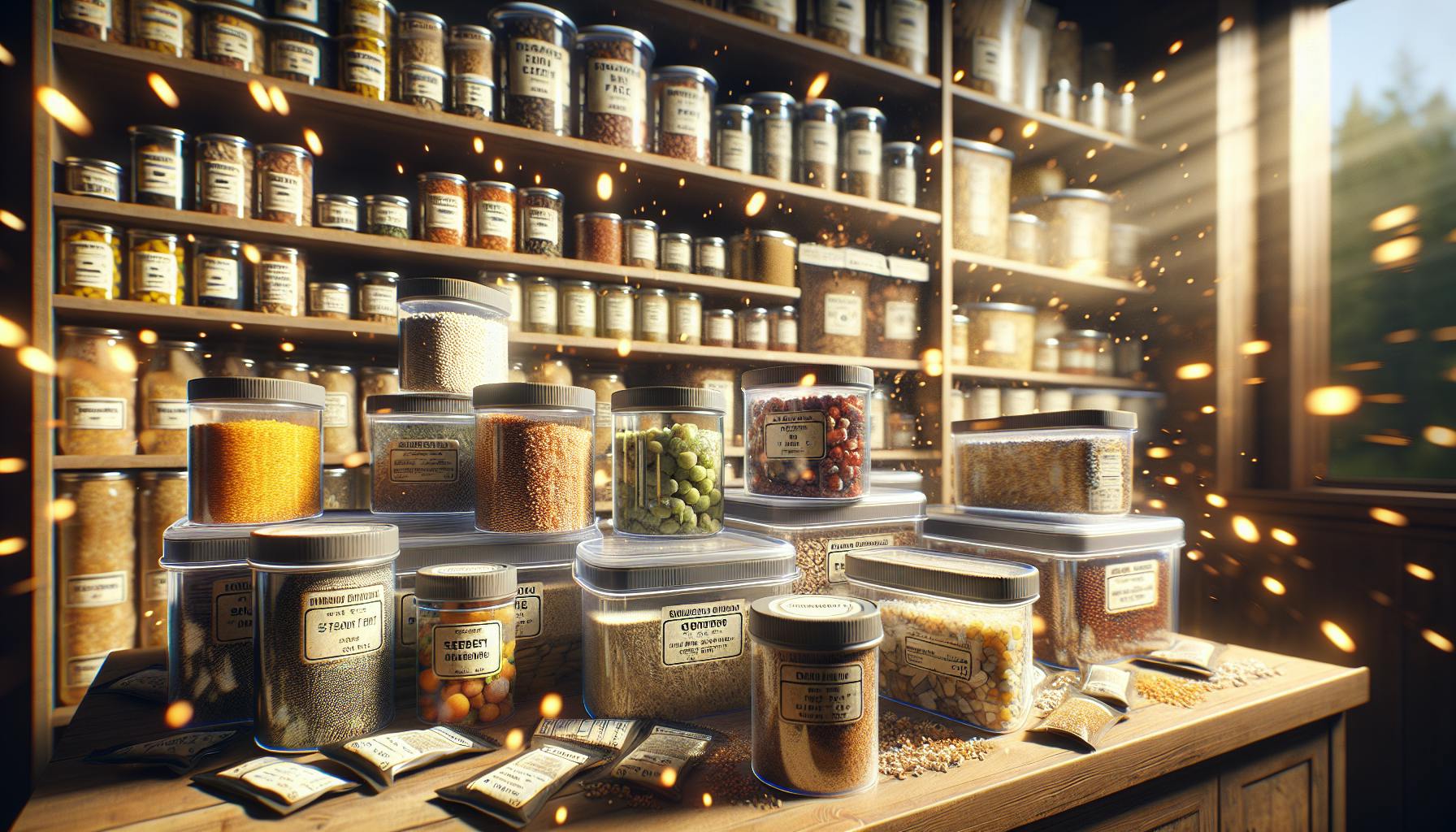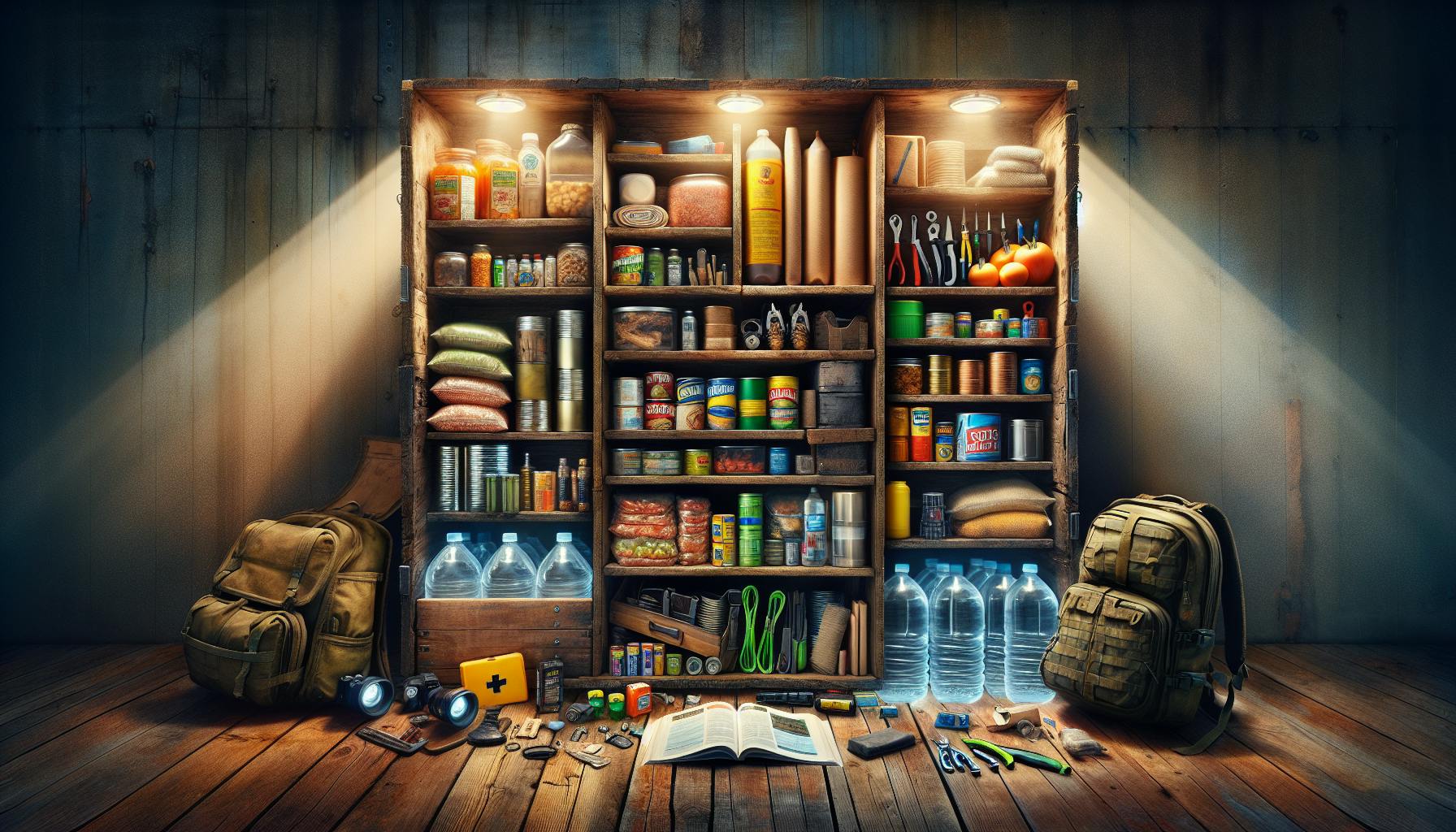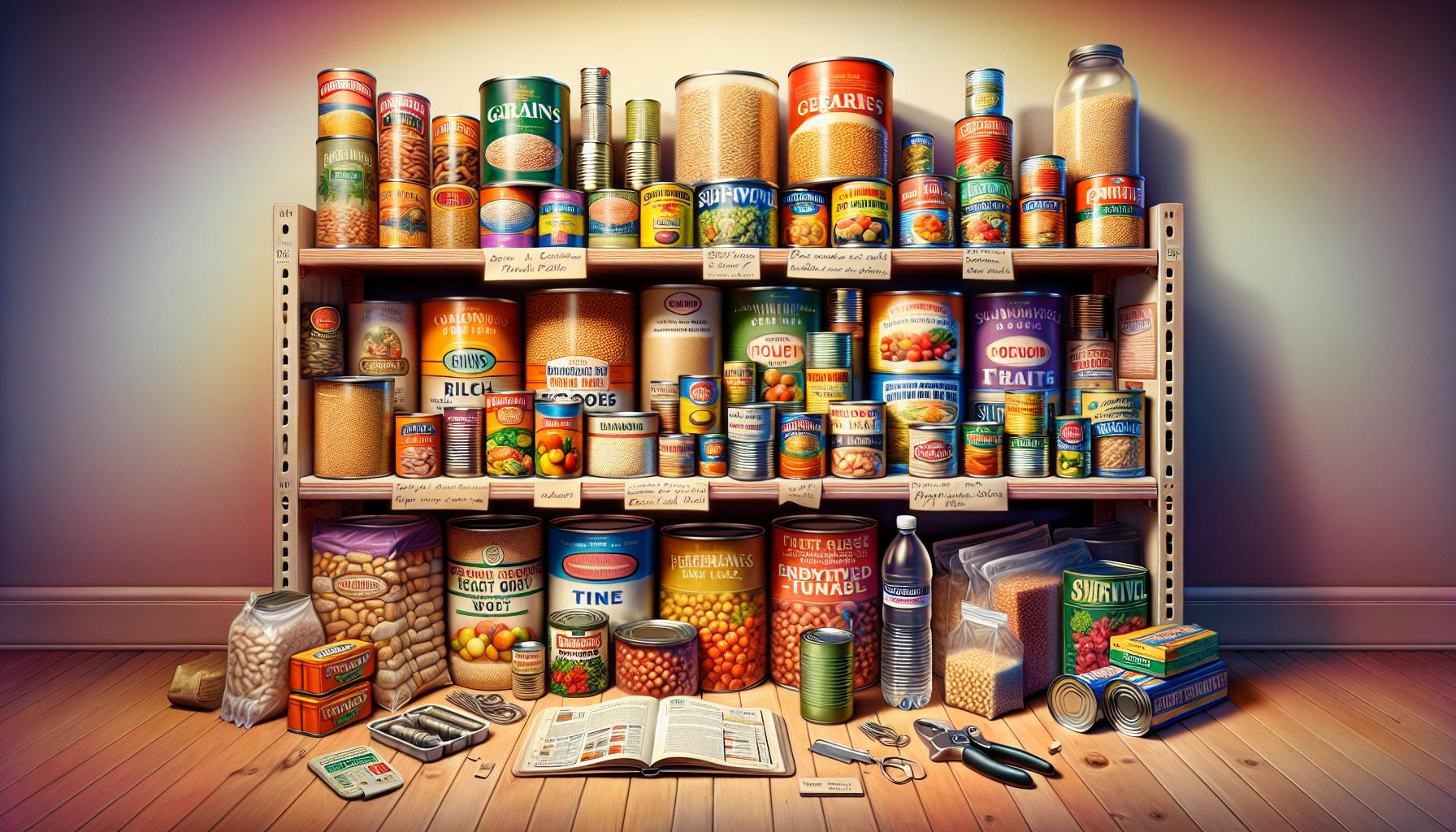Having a well-stocked supply of canned goods is a cornerstone of emergency preparedness. Canned foods are designed for long term shelf stability, providing nutritious meals without requiring refrigeration or special storage conditions. For preppers, canned foods offer an economical and convenient way to build up a diverse food reserve that covers all the nutritional bases. This article will provide an overview of must-have canned foods for a well-rounded emergency kit, along with tips for proper storage, rotation, and meal planning.
Why Canned Goods Should Be In Every Prepper's Pantry
Canned food has a shelf life of at least 1-2 years from the manufacturing date, and often lasts many years beyond that. The canning process preserves the natural nutrients and flavors of food by sealing out oxygen and killing any bacteria or pathogens present. As long as the can remains intact and undamaged, the contents stay edible and safe to eat. Unlike freeze dried or dehydrated survival food, canned goods are ready to eat - just open the can and heat up if desired.
In addition to their long shelf life, canned goods offer convenience and portability for bug out situations. Cans are easy to grab and go, and require minimal preparation besides opening them up. They are also very budget-friendly compared to specialty emergency food kits. A well-stocked pantry of canned goods provides quick access to balanced nutrition if you need to evacuate.
The wide selection of canned meat, fish, fruits, vegetables, beans, soups, and meals allows preppers to stock up on essential proteins, fats, vitamins, minerals and fiber. Nutrition bars and MREs are useful for portability, but canned goods provide more variety and can be easily incorporated into regular family meals. Building a reserve of canned food brings peace of mind that your family will be well fed in an extended emergency scenario.
When buying canned goods for your emergency kit, be sure to get nutritionally balanced choices packed in water or juice, rather than salt or preservatives. Focus on high protein foods like canned chicken, salmon, tuna, beans, and chili. Fruits and vegetables provide vitamins, minerals, and dietary fiber. Having a diverse pantry prevents flavor fatigue and supplies options for special dietary needs.
Canned Proteins: Meat, Seafood, Beans and Chili
Protein foods should make up a significant portion of your canned reserves. Here are some must-have options:
-
Canned tuna, salmon, chicken, turkey - These canned meats are versatile for sandwiches, salads, casseroles or just eating as-is. Opt for varieties packed in water for less sodium.
-
Canned beef, pork - Use for making chili, soups, pasta sauces or taco filling.
-
Canned beans - Beans offer plant-based protein and fiber. Stock up on kidney beans, garbanzo beans, black beans and refried beans. Consider ready-to-eat bean salads for quick protein.
-
Canned chili, stew - Look for lower sodium varieties with visible meat and beans. Chili makes a fast, filling meal.
-
Canned clams, oysters - Provide essential omega-3 fatty acids and minerals like iron. Add to pasta or chowders.
-
Canned sardines - A small fish with edible bones, sardines supply calcium in addition to protein.
When stocking canned meats and seafood, get a variety of flavors and textures to keep meals interesting. Try smoked salmon, hot chili beans, herbed chicken breast, and other specialty options.
Fruits and Vegetables - Nutrients and Variety
While proteins provide the bulk of your nutrition needs in an emergency, fruits and veggies play a supporting role:
-
Canned tomatoes - Crushed, diced or sauce tomatoes serve as a base for chili, soups, pasta sauce and more.
-
Canned carrots, potatoes, corn, peas - Having a variety of veggies prevents vitamin deficiencies and menu fatigue.
-
Canned spinach, beets, mushrooms - Nutrient-dense options beyond the basics.
-
Canned pineapple, peaches, pears, fruit cocktail - Canned fruits offer vitamin C, fiber and sweetness. Choose varieties packed in juice rather than heavy syrup.
-
Canned green beans, olives, pickles - Affordable ways to expand your veggie selection.
When shopping, compare brands and seek lower sodium options. Canned pumpkin, sweet potatoes and mixed vegetables also make nutritious additions.
Storage Tips and Rotation System
Proper storage and rotation helps canned goods last as long as possible. Here are some best practices:
-
Store cans in a cool, dry place like a basement or root cellar. Avoid direct sunlight and temperature extremes. Use rodent-proof containers to prevent damage from pests.
-
Use the FIFO (first in, first out) system to rotate your stock. Consume oldest cans first.
-
Label cans with purchase dates using a permanent marker. Monitor expiration dates.
-
Take inventory every 6 months and create a meal plan to use up cans approaching expiration.
-
Donate unopened cans to a food bank as they near expiration rather than wasting food.
-
Inspect cans before opening - never consume food from bulging, leaking or damaged cans as this indicates spoilage.
Following these steps ensures you have a steady supply of canned goods at optimal quality. As you consume older cans, replace them with fresh purchases to keep your reserves stocked.
Building Nutritious Meals from Canned Foods
With a well-balanced pantry, you can prepare everything from simple meals to gourmet creations using canned goods. Try these recipe ideas:
-
Chicken casserole - Mix canned chicken, cream of mushroom soup, veggies and cook in the oven.
-
Three bean vegetarian chili - Saute canned beans, tomatoes, peppers and spices for a hearty stew.
-
Salmon patties - Mash canned salmon with eggs, breadcrumbs and seasoning, then pan-fry into patties.
-
Tuna noodle casserole - Comfort food made with canned tuna, cream soup, peas and noodles.
-
Fruit salad - Mix canned pineapple, pears, peaches and banana slices. Sprinkle with shredded coconut.
-
Bean and veggie soup - Saute canned beans, corn, spinach and broth for an easy soup.
Be creative and don't be limited by labels - you can use canned ingredients in unexpected ways with delicious results. Maintaining nutritional balance is key.
Frequently Asked Questions About Canned Food
Many preppers have questions about safely storing and using canned goods. Here are some common FAQs:
How can I identify damaged cans? Look for swollen lids, leaking seams, dents, rust and loose labels before opening. Bulging or leaking cans may contain spoiled food.
Can I eat canned food past the expiration date? As long as cans remain in good condition, contents should be safe indefinitely, though quality declines over time. Use your judgement evaluating scent and appearance.
What are signs of spoilage? Spoiled canned food may smell unpleasant, look discolored, have an unusual texture, or make you sick after eating it. Rust, damage or contamination also increase spoilage risks. When in doubt, throw it out.
How much canned food should I stockpile? Experts recommend having at least a 3-month supply, but more is better for long-term disruptions. Take your family's needs into account.
Why Canned Foods Should Be in Every Emergency Kit
In summary, canned goods are a versatile, affordable and safe method of stockpiling survival food with a long shelf life. The variety of canned meats, fruits and vegetables allows you to store a nutritionally balanced food supply tailored to your family's needs and tastes. Properly stored canned food retains both nutrients and flavor for years, providing appetizing, healthy meals when you need them the most. No emergency pantry is complete without a robust selection of canned goods. Popular brands like Mountain House, Wise Company, and Thrive Life offer high-quality canned food options. Visit WeLovePrepping.com to browse our recommendations and shop our selection of canned goods deals. With the right emergency canned food reserves, you can rest easy knowing your family will stay well-fed in any crisis situation.


